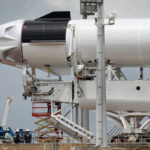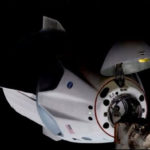By Jack Phillips
Elon Musk’s SpaceX launched its first Starship rocket on Thursday morning, but it exploded during a mid-flight failure over the Gulf of Mexico near Texas.
“As if the flight test was not exciting enough, Starship experienced a rapid unscheduled disassembly before stage separation,” the private space exploration company wrote on Twitter. “Teams will continue to review data and work toward our next flight test.”
The company wrote that with the failed test, the firm will “learn” from its mistakes. “Today’s test will help us improve Starship’s reliability as SpaceX seeks to make life multi-planetary,” it said.
“Congratulations to the entire SpaceX team on an exciting first integrated flight test of Starship!” SpaceX wrote.
Live video footage of the test showed the rocket traveling for several minutes before the rocket appeared to fail. The unmanned rocket later exploded in midair.
Musk’s firm was looking to send the nearly 400-foot rocket on a round-the-world trip from the southern portion of Texas, located the Mexican border. Both the booster and spacecraft were slated to fall into the ocean.
Musk, who is also the owner of Twitter and Tesla, has not issued a public response as of Thursday morning—after the failed test.
Large numbers of of spectators watched from South Padre Island, located a few miles away from the Boca Chica Beach launch site. SpaceX’s first attempt to launch the Starship rocket was called off Monday due to a technical issue.
The company plans to use Starship to send people and cargo to the moon and, eventually, Mars. NASA has reserved a Starship for its next moonwalking team, and rich tourists are already booking lunar flybys. It was the second launch attempt. Monday’s try was scrapped by a frozen booster valve.
SpaceX says it plans to use the Starship to send people, cargo, and equipment to Mars and the moon. Earlier versions of the rocket were sent into the stratosphere.
Both the lower-stage Super Heavy booster and the upper-stage Starship vessel it would carry to space are designed as reusable components, capable of flying back to Earth for soft landings—a maneuver that has become routine in dozens of missions for SpaceX’s smaller orbital-class Falcon 9 rocket.
But neither stage would be recovered from Thursday’s launch. Instead, both parts were to end their introductory flight to space with crash landings at sea. The lower stage will fall into the Gulf of Mexico after separating from the upper stage, which will come down in the Pacific Ocean after achieving nearly one full Earth orbit.
In February, SpaceX conducted a test-firing of the Super Heavy, igniting 31 of its 33 engines for roughly 10 seconds with the rocket bolted in place vertically atop a platform. The U.S. Federal Aviation Administration last Friday granted a licence for the first test flight of the fully stacked rocket system, clearing a final regulatory hurdle for the long-awaited launch.
The SpaceX announcement this week on Twitter that it planned a second launch attempt on April 20, after the first was scrubbed, amused many of Musk’s fans and detractors alike.
Reuters contributed to this report. This is a breaking news article. Check back for more developments.






